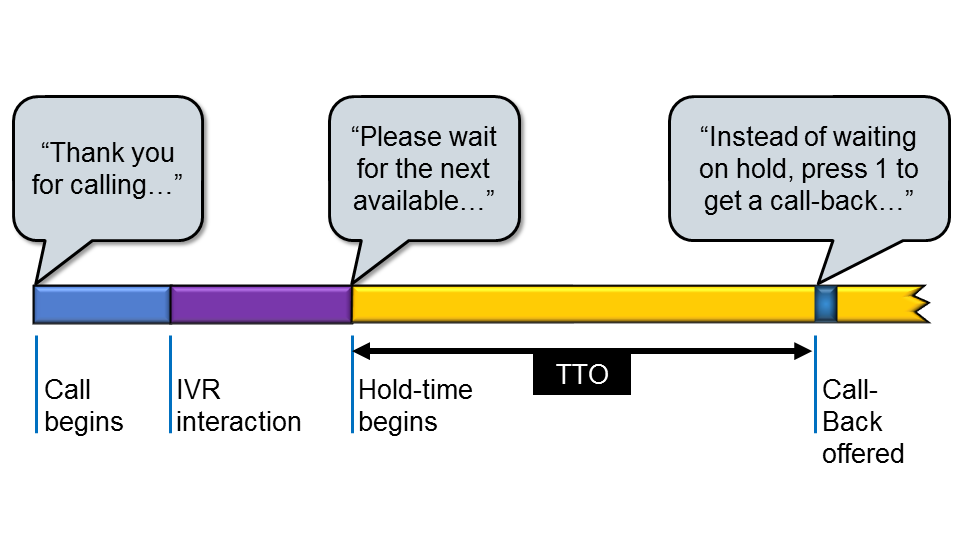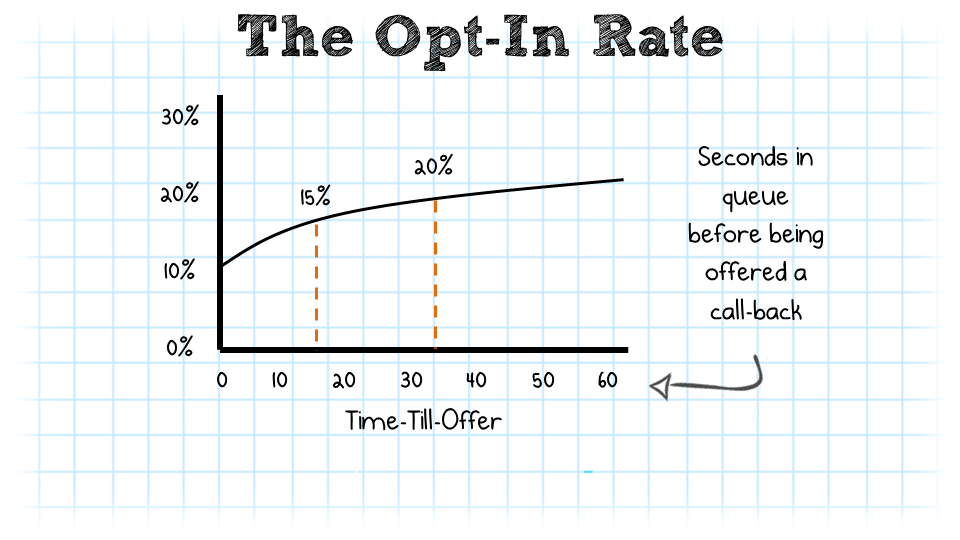 We all know how demanding today’s consumers are. Nowhere is their patience shorter than when dealing with your call center. If you’re leaving callers on hold for more than a few minutes, you’re asking for trouble. Your agents will hear the complaints (which extends handle times) and your social media timeline will show angry tweets. (Have you looked up your company on OnHoldWith.com? You might be unpleasantly surprised.)
We all know how demanding today’s consumers are. Nowhere is their patience shorter than when dealing with your call center. If you’re leaving callers on hold for more than a few minutes, you’re asking for trouble. Your agents will hear the complaints (which extends handle times) and your social media timeline will show angry tweets. (Have you looked up your company on OnHoldWith.com? You might be unpleasantly surprised.)
Not many problems in the call center have an easy fix. Luckily, this one does: Replace hold time with a call-back. Even better news: It’s easier than ever to add this capability to your call center with cloud-based offerings like Fonolo.
Whichever approach you take to adding call-backs, you can greatly increase your odds of success by learning the 3 secrets in today’s post.
1) Timing is Everything
The first step in getting a caller to opt for a call-back is playing the offer message. This is usually something like, “Instead of waiting on hold, you can get a call-back from the next available agent by pressing 1 now.”
One of the critical variables in a call-back deployment is when to play that message to the caller. The “Time-Till-Offer” or “TTO” is the amount of time a caller spends in queue before hearing a call-back offer.
Changing the TTO will impact how many callers hear the offer. For example, if the average hold time is 2 minutes, but the offer isn’t played until 3 minutes in the queue, most callers won’t hear it.
TTO also impacts the Take-Up Rate, which is the fraction of callers who opt-in after hearing the message. There’s interesting psychology at play here: Some callers will take an offer that is made immediately, while others will opt to “wait it out”. But after a few minutes on hold, callers are more likely to opt-in, so the Take-Up Rate grows. After a while, this effect flattens out. The chart below is an example of this relationship (but may differ in your environment).
Take-Up also increases by making multiple offers for the call-back. In fact, this is the best way to maximize the overall call-back rate. (If you’re assessing vendors for a call-back solution, make sure the ability to make multiple offers once a caller is in queue is on the feature list.)
Here is a short video of a Fonolo customer talking about his experience in adjusting the TTO:
[fonolo_overlay_video src=”105148079″ title=” When to Offer the Call-Back” time=”0:40″]
Although this sounds complicated, it’s actually good news. Changing TTO is an easy “lever” to adjust and has a big impact on the performance of your call-back deployment.
If you want to go deeper into this exercise, download our eBook, “The ROI of Call-Backs for Your Call Center”.
2) Never Make a Caller Wait Twice
There are two flavors of call-backs: “agent-wait” or “customer-wait”.
In the customer-wait scenario, the call-back system tries to estimate when the next agent is going to be ready, and calls the customer a few minutes ahead of that time. This maximizes agent efficiency, but it results in a negative experience for the customer. From their perspective, they requested a call-back only to be placed on hold again. If the system incorrectly determines agent availability, then hold time can be long, negating the advantage of having call-backs in the first place!
The tweet below captures the customer reaction to this perfectly.
Interacting with DISHTV. +1 for using virtual hold. As promised they called back in 11 minutes. -1 for then putting me on hold for 9 minutes
— Dave Michels (@DaveMichels) August 20, 2016
(DishTV, if you’re listening, hit me on email.)
The alternative is the agent-wait scenario. Here, the agent is already on the line when the customer answers the call. This is a better experience for the customer, but the agent has to wait while the customer’s phone rings. Luckily, the idle time is typically 10 seconds or less.
Sometimes “agent-wait” and “customer-wait” are called “customer-first” and “agent-first”, respectively. To avoid confusion just ask your call-back vendor to walk you through the timeline, so you know what you’re getting.
3) Give Customers a Smooth Escalation to Voice
Voice, email, Twitter, Facebook, web chat… at this point, a vast majority of contact centers (88% according to one study) are using multiple channels to interact with their customers. Each channel has its strengths, but the voice channel really stands apart.
When a customer has a tough issue to discuss, when the matter is urgent, or when the other options have left them frustrated, there’s an instinctive desire for them to have a phone conversation with another human.
Of course your contact center should invest in self-service channels: they are the cost effective way to help your customer, and most customers prefer them now anyway. But, remember that even the best self-service systems have a dead-end moment, where the customer needs to talk to an agent. This is one reason call-backs are such an important tool to add to your toolbox: they allow your callers to escalate smoothly to a voice conversation from any other channel.
To make the most of this ability, your call-back solution needs to have strong multi-channel capabilities, like pre-built components that can be added quickly to your web page or mobile app.

Discover the Contact Center Trends That Matter in 2024
Dig into industry trends and discover the changes that matter to your business in the year ahead.


